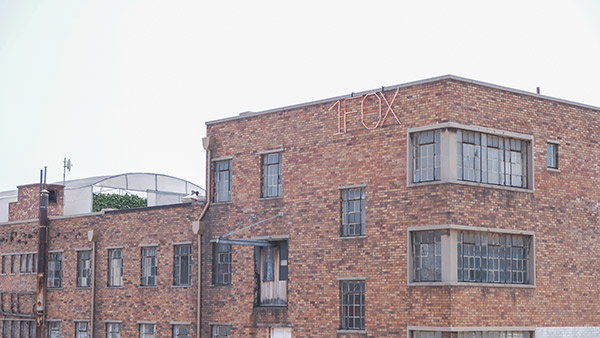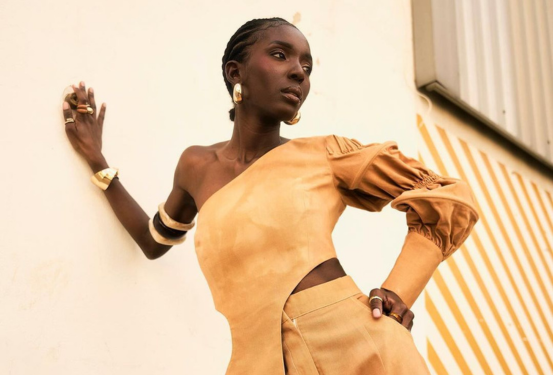In 2017, EFF President Julius Malema stood in front of Parliament and said: “People of South Africa, if you see a beautiful piece of land, take it, it belongs to you”. Debates about land reform have been on the tip of everyone’s tongue since Malema and the EFF forced the issue into the forefront of public consciousness. The conversation around land easily conjures up images of the vast space that South Africa holds, from long stretches of beach in Clifton to long stretches of field in the Free state. We less easily imagine the concrete slabs and traffic-filled highways of Joburg. Living in a city that is decaying as fast as it is developing often makes it easy to feel a sense of disconnection from the land under our feet. What can belong to us when things often feel so far above us?
Plants are growing across rooftops in Johannesburg. In 2018, South African Breweries and Anheuser-Busch InBev merged, with the support of the government, to invest R1 billion in “public interest commitments”. Around R2 million of this money was pledged to developing what is being called “urban agriculture”. This project, in partnership with the City of Johannesburg, is funding the upstart of urban farms, giving selected young farmers the chance to start their own industrial “plot”. These farmers are using the restricted space for hydroponic farming: a farming method in which a nutrient rich solution is used instead of traditional soil. The goal set out from this merger is ambitious: aiming to introduce 1000 new farmers into the workspace and turn South Africa into a major exporter of maize and barley by the year 2021.

On top of 1 Fox Street in Maboneng is a demo garden, where leafy greens on racks are stacked high at every corner in almost every space. Hola Harvest, one of the benefactors of the SAB/AN InBev merger, is the group responsible for the space. Started in 2018, with a focus on urban environmentalism and sustainability, the group has been a major presence in the urban farm space. In addition to the Maboneng location, the group now farms on rooftops in Hillbrow and FNB Bank City. With a starting roster full of young black farmers: Hola Harvest both grows and sells fresh produce to local restaurants and communities across Johannesburg central. A similar space is opening up in Braamfontein this month, taking over the rooftop space above the courtyard on Juta street. The most important role of any urban farm is (and should be) to provide equitable access to food with lower environmental cost. But urban farming and greenspaces are a tool for more than just food: they’re a site of aesthetic pleasure. Literally, a sight for sore eyes. Whether they know it or not, these spaces are slowly beginning to open the possibilities for something else, something deeply significant.
There is an intrinsic connection between the aesthetics of a place and the mental health of the people that inhabit it. When middle-class Capetonians tell you that theirs is the most chilled city in the world, they mean it. Studies have shown that interacting with the colour green from plants has a positive effect on people’s moods and emotional stability. According to researcher Rachel Kaplan, the act of viewing plants in an urban space, even if it is just from a window, contributes significantly to people’s satisfaction with their neighbourhood and increases their ability to achieve a positive sense of well-being and restoration. The closer one lives to the CBD, the less likely one is to see a park used for recreational purposes, flowers in a window or even grass lining what little sidewalk is available. In a city that moves as quickly as this one does, it’s easy to disregard the physical space because the culture, the scenes, and various industries we find ourselves in are more overwhelming. The physical space becomes just a place as opposed to somewhere to fully live, enjoy and breathe in. Unfortunately, the lower your income, the truer this reality becomes. Plants are an opening point to changing that a little bit. Seeing beautiful things around us does work to make life feel a little more beautiful than it does now.
Johannesburg isn’t the first city to try its hand at industrial gardening. New York, Detroit and Beijing are all investing money into urban agriculture. Some have been more successful than others. A study done on urban farms in New York found that many of these spaces were not making the ambitious environmental strides that they had initially set out to. Joburg, however, feels slightly different. The city’s urban agricultural project is primarily focused on developing unused (and otherwise uninspiring) rooftop spaces, which means no locals are being displaced for the sake of leafy greens. Additionally, farms like Hola Harvest are open to the public, allowing people to move through the space on Fridays and every other Sunday and selling fresh produce to the community. We can be hopeful in the future that these rooftops will be open on weekdays and allow patrons to enjoy the space in more ways than one. The vast claims of environmental benefits of these farms are not to be looked at uncritically. It is, however, interesting to consider the aesthetic and mental health benefits of these spaces to see what their broader appeal could be in the community.
It’s not a perfect scenario, and the spaces are far from being an urban oasis. However, there is something to be said for creating spaces that offer a small escape from the constant hustle of the streets and blur of tall buildings. In creating spaces in which people can see things grow and bloom, these spaces open the possibility for creating neighbourhoods that people can be pleased to look at and live within. Spaces that can help alleviate the everyday stress we feel simply through their existence. It gives us something to look at from our windows. Urban gardening is a narrow path to changing food production. Despite this, the possibilities for urban gardening to change the way we feel about and interact with the spaces in our city are a little larger. It’s the possibility to feel like a beautiful piece of land could belong to us, right here in the CBD.




















































